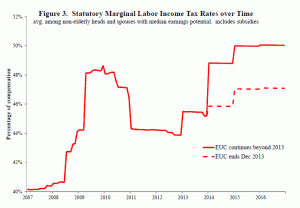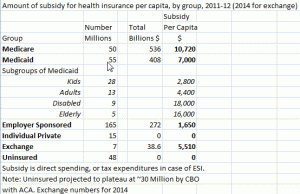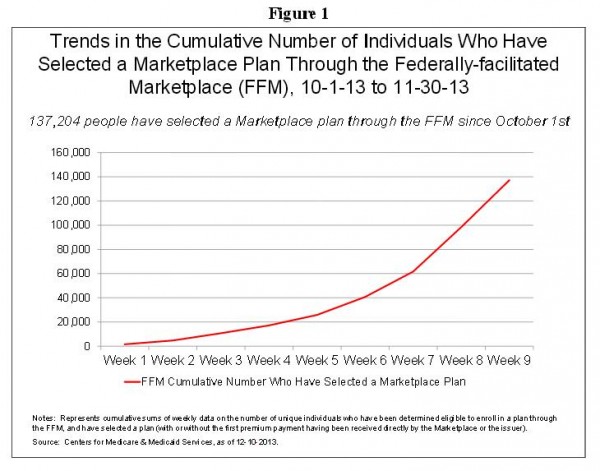Did the period from early November through early January comprise the most remarkable advances in the history of federal mental health policy? It’s a defensible argument. To learn why, check out my latest post at Stanford School of Medicine’s SCOPE blog.
Marginal Labor Income Tax Rates under the ACA
I was a discussant of Casey Mulligan’s paper Average Marginal Labor Income Tax Rates Under the ACA at the UNC Tax Symposium hosted in Chapel Hill, NC by Doug Shackelford this past Saturday. His figure 3 summarizes changes in the marginal tax rate of labor income over the past 7 years, accounting for both explicit and implicit taxes for someone with median wages. For example, in 2014, there is an increase in the marginal rate due to a reduction in work incentive that occurs for someone with median wages because premium subsidies are based on a income-linked sliding schedule-an implicit tax on earning more because you lose insurance subsidy as you earn more income. The paper also identifies increased implicit incentives to work more, for example, the fact that exchange subsidies cannot flow to those below 100% of poverty.
ACA geography in blue and red
As you all know, December was an excellent month for the ACA exchanges, federal and state. The official HHS totals at 28 December were 2.15 million for market policies, 1.58 million for Medicaid/SCHIP. Charles Gaba’s running total for all new ACA coverage – including the mass Medicaid baptisms by transfers from state schemes, private policies contracted outside the exchanges, and under-26es added to their parents’ policies – stands at a round 10 million today.
The HHS report rightly ignores the puerile talking point that the private policies aren’t all paid up. So what? Why should anybody shop with great difficulty for medical insurance, choose a policy, and abandon it at the till at the last minute like an excess packet of cornflakes?
It does go in detail into the demographics, as a high takeup by healthier young people will be crucial to the actuarial viability of the plan. I’ve nothing to add on this issue to the full commentary of others. Matt Yglesias’ worries were answered, to my mind conclusively, by Kevin Drum, Sarah Kliff and Josh Marshall. Short take: the ranking expert at Kaiser says the takeup by under-35s is currently at the minimum for viability, with modest premium increases, and on past experience and by common sense the proportion will rise. Above all, the insurance industry is silent. If there were a real risk of a death spiral, they’d be screaming blue murder.
Instead, let’s take a look at the political and social geography. Here is Gaba’s table of the takeup of market policies by state as of 13 January, as a proportion of the uninsured. Continue Reading…
Rick Altice on the challenges of correctional care (and related matters)
When I was a doctoral student, I wrote a desk-jockey dissertation. I analyzed a gigantic dataset to examine informal economic transfers within low-income families. Then I took a Yale postdoc. One of the first people I met there was Dr. Frederick Altice, who was a key investigator and clinician providing care to HIV-infected prisoners and drug users at the community health care van, a needle-exchange-based health services targeting street drug users. This was the mid-1990s and New Haven was an epicenter for HIV among drug users. It was a pretty awful time for the city. At least New Haven had intrepid people like Rick who worked to limit the public health harms and the human suffering.
One of my first times out, a woman stepped on the van to get some care. She was a sex worker and a person who injected drugs. Within the close quarters of that van, many of the other people waiting gave her a little extra room. She was very grimy, probably homeless. Rick called her over. He pulled out an apple, and split it with his penknife. He handed her one piece, and said, “Why don’t you share this with me?” As they ate together, he conducted a beautiful clinical interview that explored her incredible range of serious health problems.
I interviewed Rick today at Wonkblog. We talked about a range of pertinent issues in correctional care. If anything, Rick understates the challenge. Connecticut is quite unusual in providing generous Medicaid to many low-income adults who would be uninsured in other states.
More here.
Makers v Takers in Health Insurance
Peder Zane laments that Obamacare has turned his family into takers in the health insurance realm. My post shows the subsidy different groups now get for health insurance, with the key table below.
How North Carolina could (sorta) have universal coverage by 2016
Could North Carolina became the first State to achieve universal health insurance coverage? A student asked me recently what it would take financially to do so, and how it could most simply and quickly be done. Here is a quick estimate.
Using the Kaiser Family Foundations numbers, in 2016 there will be 1,216,000 uninsured persons in North Carolina if the Affordable Care Act were repealed. If implemented, they estimate that in 2016 398,000 persons will be covered by private insurance bought in exchanges who would otherwise be uninsured, and 377,000 (1) who otherwise would be uninsured will be covered by Medicaid if North Carolina undertakes expansion.
You want health insurance with terrible customer service? Forget Obamacare-try Blue Cross Blue Shield of Illinois
There’s not much more to my post than the headline: I’ve just concluded my sixth phone call with BCBS of Illinois (having been hung up on the first five times by an automated phone tree which sends you directly to an automated service-satisfaction survey without first giving you any service to be satisfied about). This means I spent the better-or worse-part of two hours trying to find out why BCBS sent me a bill for my January premium I’d already paid on-line.
I went straight to Blue Cross to buy health insurance because I don’t qualify for a subsidy and didn’t see any reason to grapple with-or burden-healthcare.gov. But every time you hear that payments made on the government Website might not be transferring properly to the insurers, please remember that payments made on the Blue Cross Website suffer from the same disability. And while there’s a live chat on Healthcare.gov which at least connects you to a person who can explain the problem, Blue Cross has made sure to keep its product completely untouched by human hands. I finally got through by calling corporate headquarters and explaining first to the corporate operator and then to local customer service and then finally to national customer service (after local stayed on the line with me for ten minutes to assure that national actually picked up) that a bill dated 12/12 should have included an electronic payment made on 12/2, and that no, the bill and my payment hadn’t “crossed in the mail.” In the words of the great Eric Clapton, “How many times must I explain myself ‘fore I can talk to the boss?” though by “Forever Man” I doubt he meant “man with whom you have to stay on hold forever.”
In short (I know, other people’s customer service nightmares are a bore while one’s own is fascinating), everyone who complains about the f***-ups of Obamacare ought to take a second a remember the last time s/he had to deal with a private insurer. In fact, the worst thing about the Affordable Care Act is that it leaves the insurance companies in the picture, and us to their continued tender mercies.
The first million: reality check
On November 28 I welcomed the first million enrolees under ACA, whether to marketplace policies or Medicaid/SCHIP. The post was based on the fragmentary data available at the time, brought together in Charles “brainwrap” Gaba’s invaluable running spreadsheet, with some extra tweaks and guesswork by me.
HHS has just released its ACA enrolment report to 30 November. It even has a chart! Heavens to Betsy! Here’s the rare bird (click for better resolution):
How did I do?
- My headline number: one million.
- HHS: “Number of Persons who have Selected a Marketplace Plan or had a Medicaid/CHIP Determination or Assessment: 1.2 million”.
My point. But on the more detailed predictions, I didn’t do nearly so well. Continue Reading…
The first million
 There’s one group of Americans who have a special reason to celebrate Thanksgiving: the million who now have medical insurance for the first time, thanks to Barack Obama and the Affordable Care Act.
There’s one group of Americans who have a special reason to celebrate Thanksgiving: the million who now have medical insurance for the first time, thanks to Barack Obama and the Affordable Care Act.
I’ll justify the number after the jump. For now: welcome to civilisation.
I know, I know: ACA doesn’t create a fully universal system, it’s complicated and kludgy compared to single payer, the federal website was launched as leaky as a sieve and is being repaired as it goes, it’s uncertain whether ACA will rein in healthcare costs, there are over 30 million more uninsured to go, yadda yadda. We’ll be talking about these problems many times. For now, Americans should celebrate a milestone.
*****************************
How do we get to a million?
The health care carrot starts to come up
Ezra Klein and Evan Soltas, Tuesday morning:
It’s clear that HealthCare.Gov is improving — and, at this point, it’s improving reasonably quickly. It won’t work perfectly by the end of November but it might well work tolerably early in December. A political system that’s become overwhelmingly oriented towards pessimism on Obamacare will have to adjust as the system’s technological infrastructure improves.
Just as Arthur Applbaum promised.



